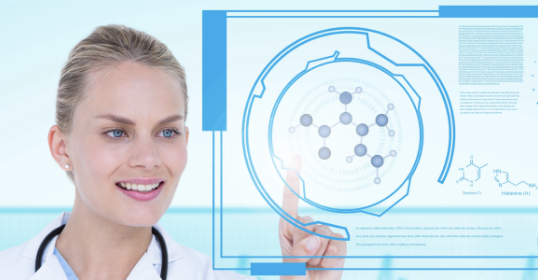If you don’t know where to start implementing an idea of an integrated medical patient portal, how to design and create patient portal, what are the best patient portal features, what are the cost and terms of development and the deployment/maintenance fee for it, this guide from the EHR technology developer Belitsoft International LLC would be the best place for it.
.png) Integrated Patient Portal Design
Integrated Patient Portal DesignSend us your request for information to get a quote for patient portal development. Contact us to know how our EHR/EMR experts could help you with Integrated Patient Portal Development
According to the legislation, an EHR system should provide access to the protected health information (PHI) about patients (personal health records) via Patient Portal. The CMS Finalized Rule mandates that payers and health systems should provide patients access to data through a Patient Access API and access to a list of in-network providers through a Provider Directory API.
Patient Portal Features
Medical patient portal is an extension of EHR. Data from it is published by a healthcare organization to the application with 24/7 online access. The patient provided with a secure login & password can view their lab results, diagnosis, radiology images or other clinical information. So portal is a convenient way for viewing, presenting and sharing information from EHR.
Besides, authorized patients can interact with healthcare providers by submitting messages, scheduling appointments, or requesting prescription renewals through the portal. Among other system’s features there is the ability to get reminders and notifications for lab results, upcoming visits and diagnostic investigations.
“Many patients want to go online and manage their visits, bills and medical records retrieval personally: They no longer want to use their lunch hour to make phone calls, and it's exciting that we can make this happen for them. ”
- Dr. Daniel Shurman, co-founder at Pennsylvania Dermatology Partners
1. Accessing personal health information
According to the officials, a key priority of such a patient portal is to provide patients with convenient round-the-clock access to personal health information (PHI) via the Internet.
Having entered a unique username and password, patients can browse (and print if necessary) health information including recent doctor visits; case reports; medication lists; immunizations; allergies; lab & test results.
Patients want to see more than after-visit summaries and lab results. That’s why more and more health systems seek to support OpenNotes international movement for allowing patients to receive all of their clinical notes.
2. Updating contact and demographic information.
Get patients to complete their registration and update their information online. Health professionals, for their part, have to check the accuracy and quality of registering data before it is accepted into their EHR.
3. Scheduling appointments online
Patients can get the appointment booked via the portal without going through the hospital telephone system and auto attendants. They receive an alert as the doctor confirms or reschedules the appointment.
Janna Mullaney, COO at Katzen Eye Group & Aesthetic by Katzen in Baltimore, shares their experience. When they first implemented an online appointment system, their patients were able to send a request, then doctors either booked the requested appointment time or offered an alternate option if they were unavailable.
They later modified the feature, making patients able to request a viable appointment. Thus, they can browse the hours for each location, every doctor who works there and their timetable, as well as check-up types they accept.
 Source: dribbble.com/shots/5978081-Healthcare-App-Booking-Appointments
Source: dribbble.com/shots/5978081-Healthcare-App-Booking-AppointmentsPatient portals can help practitioners with cutting down on phone calls and decreasing non-appearance. SSM Health CIO Philip Loftus recorded a drop in no-show rates due to online scheduling. According to Loftus, patients who book online are more likely to come.
4. Messaging with a healthcare team
When a patient portal is integrated with an EHR system, secure encrypted messaging is the simplest and most efficient way to exchange information and test results both for patients and medical professionals.
“One available component of the portal that practices might not always appreciate is the secure messaging feature, which enables a practice to communicate with patients in a HIPAA-compliant manner [...] Activating this module of your patient portal can reduce the time that your patients are placed on hold and helps your practice to overcome the frequent challenges of reaching a patient.”
- Dr. Joy Woodke
5. Receiving notifications
If a patient books an appointment with a health professional, the system can reply with an e-mail, a text message (SMS) or a push notification to a mobile device. Plus, users can be reminded to take prescription medication or check a glucose level if the patient has diabetes.
6. Integration with third-party apps and systems
More and more people use monitoring devices. Whether it be a fitness tracker, a medication reminder or a glucose monitor, these systems store patient vitals and can be useful for diagnosis and treatment.
To reduce the amount of data entry required, patients can upload information directly from medical devices, fitness trackers or smartphones.
Our development teams are able to integrate any third-party solution as a microservice. We can easily connect a custom patient portal solution with an open API of Apple’s apps, for example. Thus, patients would be able to share their details and download their records onto their iPhones via the Health app.
7. Payments
Patient portals enhance customer experience in many ways, especially when providing the ability to make payments. This option makes it easier for patients to understand and handle their financial responsibility.
So, what payment features should be supported?
- Insurance information: Login to the portal and view/update insurance data.
- Billing query: Submit billing-related questions via the patient portal.
- e-Payment: Make online payments via multiple modes.
- History storage: View records of medical payment amounts and dates in one place.
- Saved payment method: Securely hold a credit card or bank information for repeat payments.
8. Downloading and completing registration forms
Whether patients complete registration forms online or when they are in the office, it usually takes 10 to 15 minutes to do all the paperwork. For those who complete pre-visit forms online, the system has to notify them of how long it takes to register.
9. Accessing educational materials and communities
Just as patients want to see their health history, they also want to figure out these records. However, diagnoses and treatment plans are usually difficult for users to understand. With a portal, they are able to access supplemental information online.
For users with lower health literacy, some health IT providers integrate natural language processing to translate certain clinical terms, thus making patient portal records more accessible.
The most effective way to improve customer health literacy lies in offering patient education where applicable. More and more health IT vendors have signed licensing agreements with educational platforms, allowing them to integrate patient education materials into their systems.
“We integrated this content with our EHR system so when a patient receives their clinical summary, they also receive educational information based on their diagnosis. We can also add information such as supplemental brochures, customize information, or include links that redirect patients to the AAO website or our contact lens distributor for more information,” - Dr. Mullaney
Patients often seek out people with similar health states for advice and support. Thus, for example, our client asked us to create a website for a community of people challenged with different diseases. Having logged in, they can access blog posts, chat with other community members and express their emotions with special icons.
The Cost of Patient Portal Development
How much does it cost to develop a custom patient portal?
There are three types of cost estimation based on three types of requirements’ completeness: Scope of Work, User Stories, Software Requirement Specification
Scope of Work is a document that lists all the needed features of a product in general terms. The result of the cost estimation after creating this type of documentation is a minimum starting price.
User Stories is a document that describes all the needed features of a product in more detail than Scope of Work (It captures "who" will use software’s feature, "what" exactly will be used and "why"). You will get Min/Max prices.
Software Requirement Specification is a document that describes all the needed features of a product in as much detail as possible. You will get the exact price.
Our experience proves that the most optimal start of patient portal development is based on the User Stories document followed by gathering of requirements up to the Software Requirement Specification document during the development.
Where to start
Formulate your idea in a request for information and send it to us to know what are the terms of delivery of patient portal software and the deployment/maintenance fee for it.
Rate this article
Recommended posts
Portfolio
Our Clients' Feedback
























.jpg)
.jpg)
.jpg)














Belitsoft has been the driving force behind several of our software development projects within the last few years. This company demonstrates high professionalism in their work approach. They have continuously proved to be ready to go the extra mile. We are very happy with Belitsoft, and in a position to strongly recommend them for software development and support as a most reliable and fully transparent partner focused on long term business relationships.
Global Head of Commercial Development L&D at Technicolor